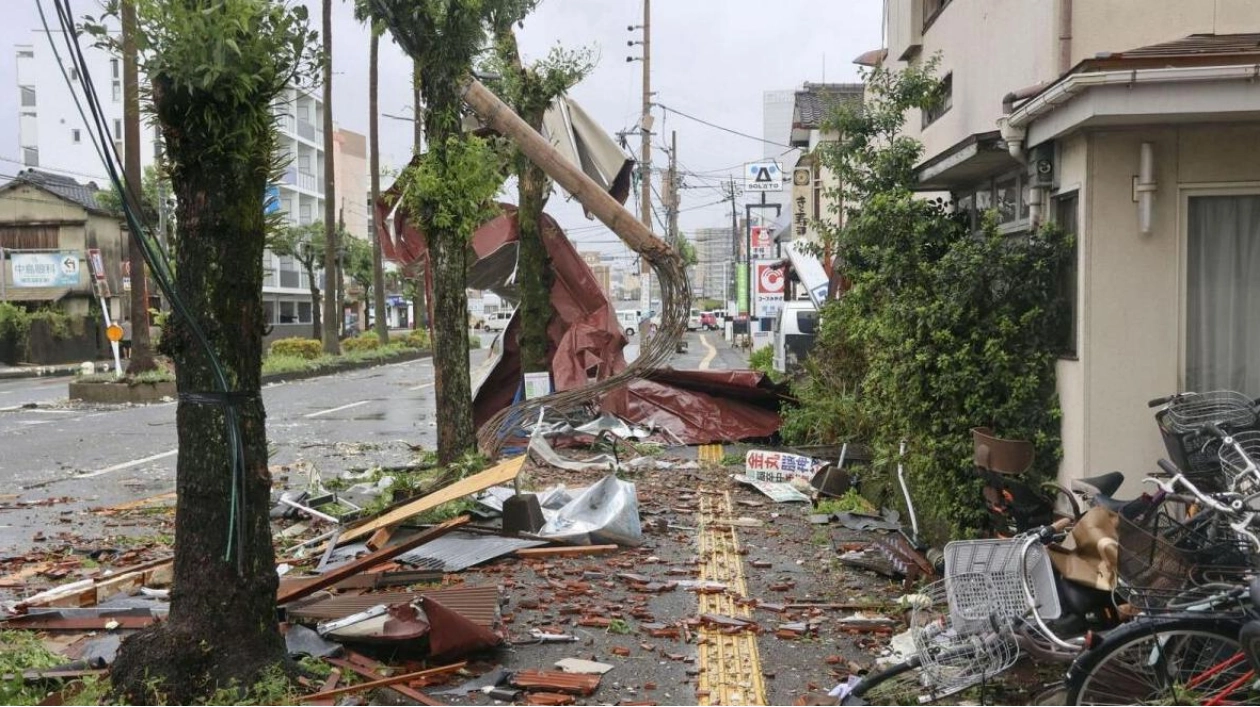Typhoon Shanshan unleashed unprecedented rainfall on Friday as it moved slowly through Japan, causing significant transportation disruptions and widespread landslide warnings, with reports of up to six fatalities. The typhoon, among the most severe to strike Japan in recent decades, has since weakened and is expected to downgrade to tropical cyclone status by Monday. However, wind speeds of up to 126 kilometers (78 miles) per hour were recorded early Friday. Prior to making landfall on Kyushu island, a landslide triggered by the heavy rains claimed the lives of three family members in Aichi prefecture, approximately 1,000 kilometers (600 miles) away. Government spokesperson Yoshimasa Hayashi confirmed four deaths, noting that the connection to the typhoon in one case was under investigation. Additionally, two individuals are feared dead, and two others remain missing. Hayashi also reported eight serious injuries and 70 minor ones, with many injuries caused by shattered glass as the typhoon damaged buildings and infrastructure on Kyushu.
Nearly 200 structures were damaged. A study released in July indicates that typhoons in the region are now forming closer to coastlines, intensifying more quickly, and persisting longer over land due to climate change. Another study by World Weather Attribution published Thursday linked climate change to the intensified Typhoon Gaemi, which resulted in numerous casualties across the Philippines, Taiwan, and China last month. An analysis from Imperial College London using peer-reviewed methods estimated that Typhoon Shanshan's winds were made 26 percent more likely due to a warming planet. Ralf Toumi, director of the Grantham Institute at Imperial, emphasized that without addressing the root cause of climate change by phasing out fossil fuels, Japan will face even greater devastation from typhoons.
Japanese authorities issued their highest level of alerts in several areas, advising over five million people to evacuate, though the actual number of evacuees is uncertain. The Japan Meteorological Agency issued landslide warnings across various parts of Kyushu, as well as in Shizuoka on Honshu island, the Tokyo region, and Kanagawa. NHK footage showed vehicles half-submerged in a flooded car park in Kanagawa, with authorities urging residents to seek higher ground. Record-breaking rains were observed in parts of Kyushu, with Misato town recording an astonishing 791.5 millimeters (31 inches) over 48 hours. Kitakyushu saw 474 mm in 24 hours, the highest since 2012, and Kunimi recorded 384.5 mm, the most since 1977.
The holiday destination of Beppu in Kyushu escaped major damage, but the typhoon left tourists stranded and frustrated, with popular attractions like onsen hot springs and a monkey park closed. Visitor Nobuhiko Takagishi expressed disappointment, stating, "This is my first time here. I was very looking forward to it, but it will be a trip to remember. A trip when I couldn't do anything." Resident Hiroko Handa sympathized with the tourists, saying, "Tourists must be in big trouble. They came here with no preparation, and they are stranded." Power outages affected over 250,000 households in Kyushu, though by Friday, only 6,500 remained without electricity as utility crews worked to restore service. Motorways in Kyushu and beyond were partially or fully closed overnight, and Shinkansen bullet trains were suspended in Kyushu and on the Tokyo-Osaka route, with further disruptions anticipated. Japan Airlines and ANA had canceled over 600 flights for Friday, following a similar cancellation the previous day, impacting nearly 50,000 passengers.






